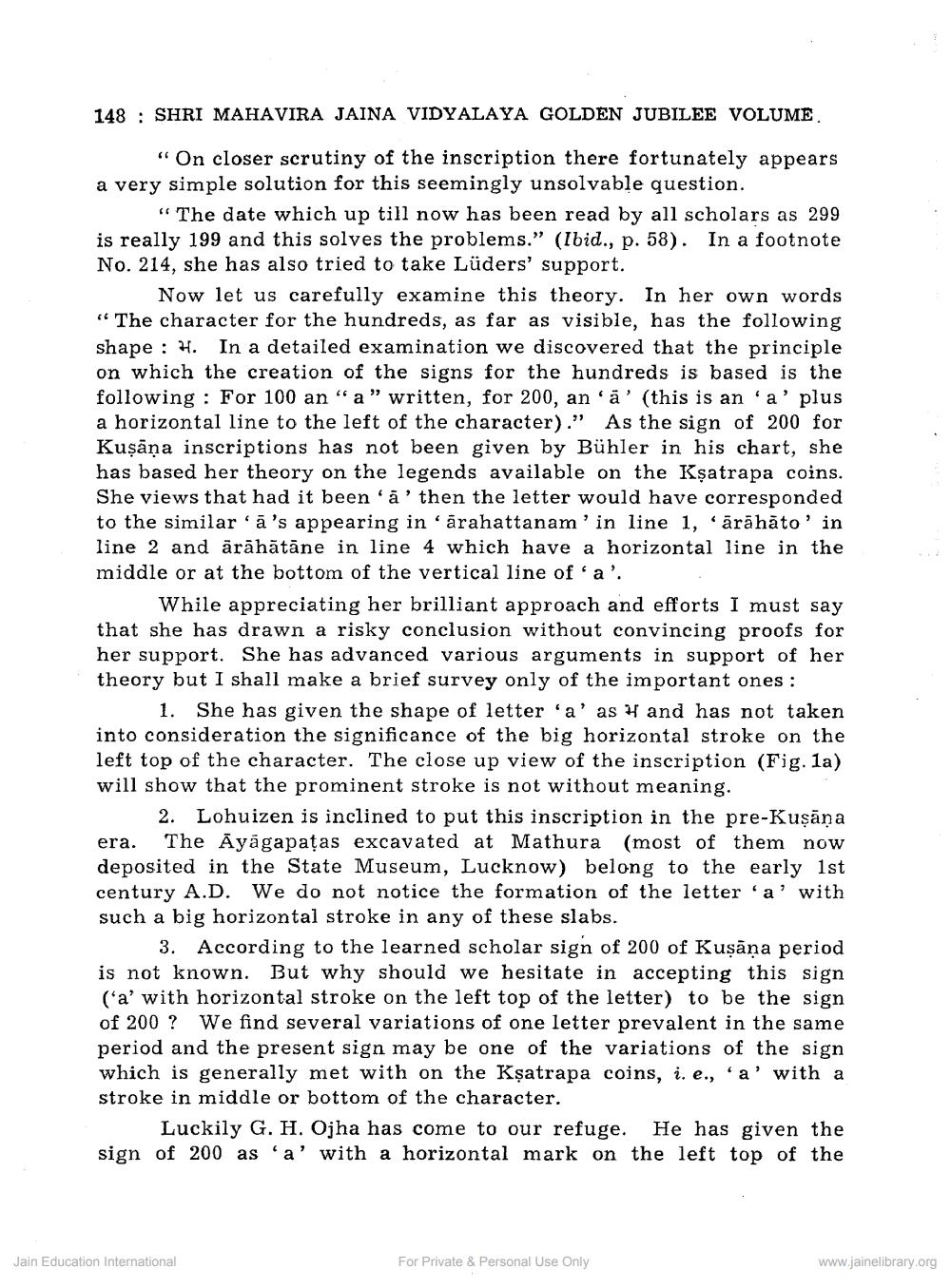________________
148 SHRI MAHAVIRA JAINA VIDYALAYA GOLDEN JUBILEE VOLUME
"On closer scrutiny of the inscription there fortunately appears a very simple solution for this seemingly unsolvable question.
"The date which up till now has been read by all scholars as 299 is really 199 and this solves the problems." (Ibid., p. 58). In a footnote No. 214, she has also tried to take Lüders' support.
Now let us carefully examine this theory. In her own words "The character for the hundreds, as far as visible, has the following shape. In a detailed examination we discovered that the principle on which the creation of the signs for the hundreds is based is the following For 100 an "a" written, for 200, an 'a' (this is an 'a' plus a horizontal line to the left of the character)." As the sign of 200 for Kusana inscriptions has not been given by Bühler in his chart, she has based her theory on the legends available on the Ksatrapa coins. She views that had it been 'a' then the letter would have corresponded to the similar a 's appearing in ärahattanam' in line 1, ārāhāto' in line 2 and ārāhātāne in line 4 which have a horizontal line in the middle or at the bottom of the vertical line of a'.
4
While appreciating her brilliant approach and efforts I must say that she has drawn a risky conclusion without convincing proofs for her support. She has advanced various arguments in support of her theory but I shall make a brief survey only of the important ones:
1. She has given the shape of letter 'a' as and has not taken into consideration the significance of the big horizontal stroke on the left top of the character. The close up view of the inscription (Fig. 1a) will show that the prominent stroke is not without meaning.
era.
2. Lohuizen is inclined to put this inscription in the pre-Kusana The Ayagapatas excavated at Mathura (most of them now deposited in the State Museum, Lucknow) belong to the early 1st century A.D. We do not notice the formation of the letter 'a' with such a big horizontal stroke in any of these slabs.
3. According to the learned scholar sign of 200 of Kuṣaṇa period is not known. But why should we hesitate in accepting this sign ('a' with horizontal stroke on the left top of the letter) to be the sign We find several variations of one letter prevalent in the same period and the present sign may be one of the variations of the sign which is generally met with on the Ksatrapa coins, i. e., 'a' with a stroke in middle or bottom of the character.
Luckily G. H. Ojha has come to our refuge. He has given the sign of 200 as 'a' with a horizontal mark on the left top of the
Jain Education International
For Private & Personal Use Only
www.jainelibrary.org




